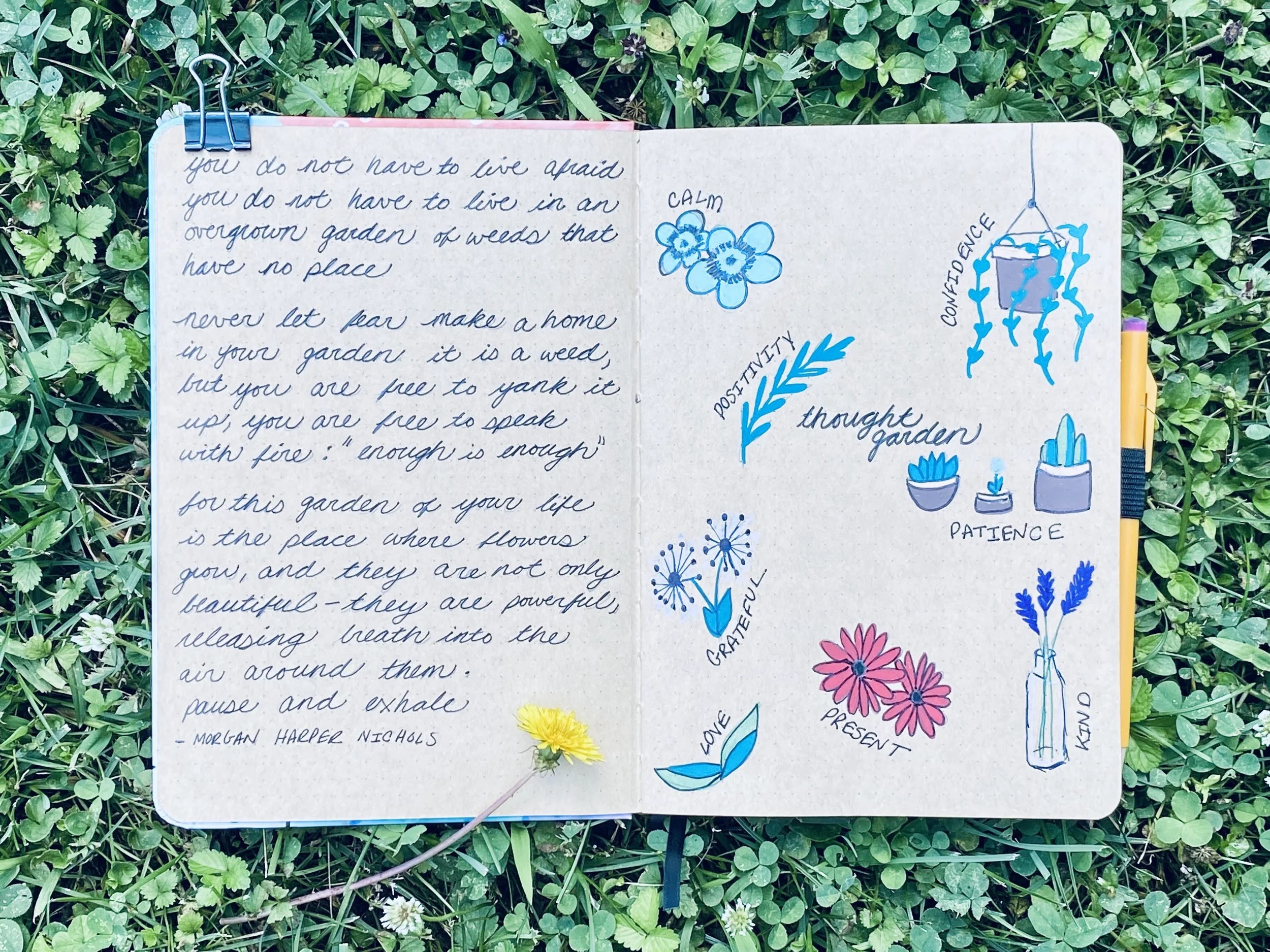Thought Gardening: Cultivating Clarity Through Nature Journaling
“Your mind is the garden, your thoughts are the seeds. The harvest can either be flowers or weeds.” —William Wordsworth
Just like a real garden, our thoughts need space, nourishment, and time to grow. I sometimes like to pause on certain words that come across in readings, poetry, or even on social media. The word cultivate stuck out to me when I initially started trying this activity in journaling workshops and seminars because we are not only constantly creating, but we are growing in many ways, too. I am not necessarily a person who has a green thumb, but I do think that journaling can be used as a tool for tending to what is going on in our minds each day. The idea of a thought garden is not new. Below are some of the inspirations for this journaling prompt, including one of my favorites from Morgan Harper Nichols.
What Is Thought Gardening?
Thought Gardening is a journaling activity that encourages you to think of your mind as a garden. It’s a space to plant seeds of inspiration, weed out negativity, and nurture emotional growth. This practice is rooted in mindfulness and creativity, helping you process what you're feeling through writing, drawing, and connecting with the natural world around you. Follow the steps below to complete this journaling prompt in any notebook.
Step 1: Identify Your Emotions/Feelings (What’s Growing?)
Start by tuning in to how you're feeling right now. Using a feelings wheel or simply jotting down a few words, ask yourself:
What emotions are blooming within me today?
If my emotions were a season, which one would they be?
Do they feel soft and quiet like a spring drizzle, or heavy and swirling like a fall storm?
Connecting feelings to the rhythms of nature brings our inner world into harmony with the outer one. I really like the feelings wheel from Calm. Take a closer look at the wheel here.
Step 2: Nature as a Mirror (What Images Come to Mind?)
Now, let your emotions take shape through the lens of nature. Imagine:
If your feelings were a plant, what would they be? A towering oak? A wildflower? A vine that needs pruning?
What weather represents your emotional landscape—sunny, foggy, turbulent?
Think back to a time outside when you felt deeply moved—what do you remember about that moment?
Use these natural metaphors to ground your thoughts in something visual, tactile, and real.
Step 3: Build Your Thought Garden
It’s time to create. Head outdoors (or bring the outside in!) and gather a few natural objects—leaves, stones, twigs, or flowers—that resonate with your current emotional state. Arrange them in a small area, like a tray or a journal page, and reflect:
What story does this little garden tell?
How does it feel to see your emotions reflected in natural form?
Has your emotional weather shifted through the act of noticing?
Sketch, write, or diagram your Thought Garden. Label parts: Seeds of Hope, Weeds of Worry, Deep Roots of Belief, or Unexpected Blooms. This is your mind in metaphor—alive, messy, growing. Grab one of the prompts below to get started.
Why It Matters
In a fast-moving world, Thought Gardening gives us permission to be still, to notice, and to reflect. It’s a practice of cultivating clarity—not by rushing toward solutions, but by creating space for growth.
This is more than journaling—it’s a gentle, grounding way to reconnect with ourselves and with nature, even if we’re sitting beside a window with a single leaf in hand.






